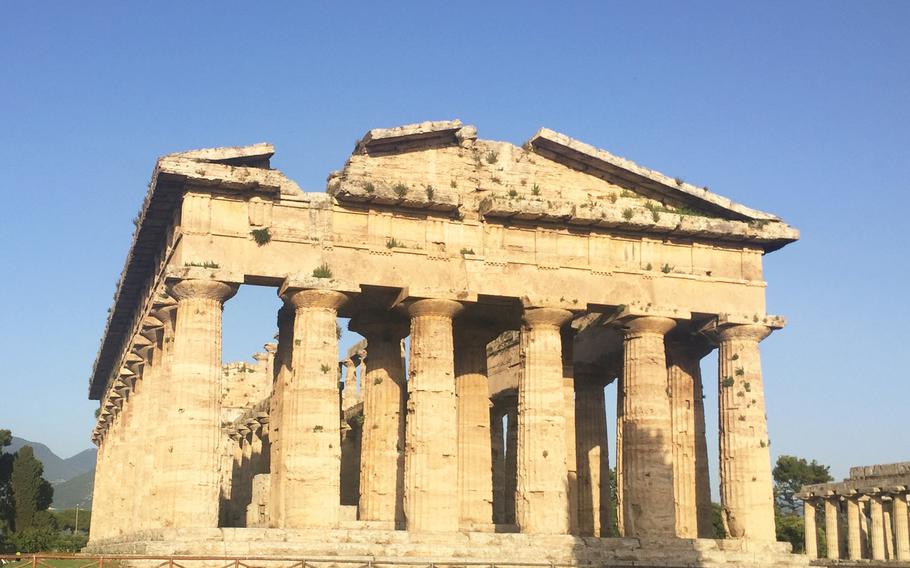
The second temple of Hera, built about 450 B.C. It is one of three ancient Greek temples that stand amid the Paestum ruins in Salerno, Italy. (Scott Wyland/Stars and Stripes)
If you were dropped into Paestum and not told the location, you’d think you were in Greece.
But you are in Salerno, Italy, where the remains of three Greek temples, with beautifully carved columns, stand among ancient ruins cradled between coastal mountains and the Mediterranean.
It’s ironic that three of the best-preserved Greek temples are in Italy.
The majestic temples are the centerpiece of an archaeological park that features 2,500-year-old ruins of a Greek colony, originally named Poseidonia, after the Greek god of the sea.
The Greeks began settling in Italy’s southern coast and in Sicily about 700 B.C. Paestum is the most stunning remnant of this ancient Greek migration.
The Lucanians, an Italic tribe, conquered the city in the fourth century B.C. and renamed it Paistos. The Romans took control in the third century B.C. and changed the name to Paestum.
The first temple of Hera, the oldest, was built in 550 B.C. Hera’s second temple, the most sophisticated in design, was built in 450 B.C. The Athena temple dates back to 500 B.C.
The site also has a national museum, an amphitheater, remains of a Roman forum, ancient roads and walls still intact. The temples are striking, whether viewed from a distance or in the interior, where you can see the fine craftsmanship of the columns.
Scholars have noted that the museum has relatively few artifacts from Paestum. Many of the pottery, jewelry and muraled slabs were excavated from Greek tombs in a nearby necropolis.
The most prominent frescoes on display are Tomb of the Diver, circa 470 B.C. The most famous mural shows the silhouette of a man — a disembodied spirit — diving into an otherworldly pool of water.
Paestum was abandoned in the early Middle Ages and largely forgotten until the mid-18th century, when archaeologists rediscovered it at about the same time they began excavating Pompeii.
They marveled at how such massive, well-preserved temples could be overlooked for so long. Upon seeing them, you will wonder the same thing.
wyland.scott@stripes.com Twitter: @wylandstripes
DIRECTIONS Address: Via Magna Graecia, 917, Paestum, Italy 84047. Ample parking is available at a nearby paid lot for a reasonable fee.
TIMES 8:30 a.m. – 7:30 p.m.
COSTS 5 euros ($5.75)
INFORMATION Phone: (+39) 0828-811-023. Website: museopaestum.beniculturali.it/?lang=en